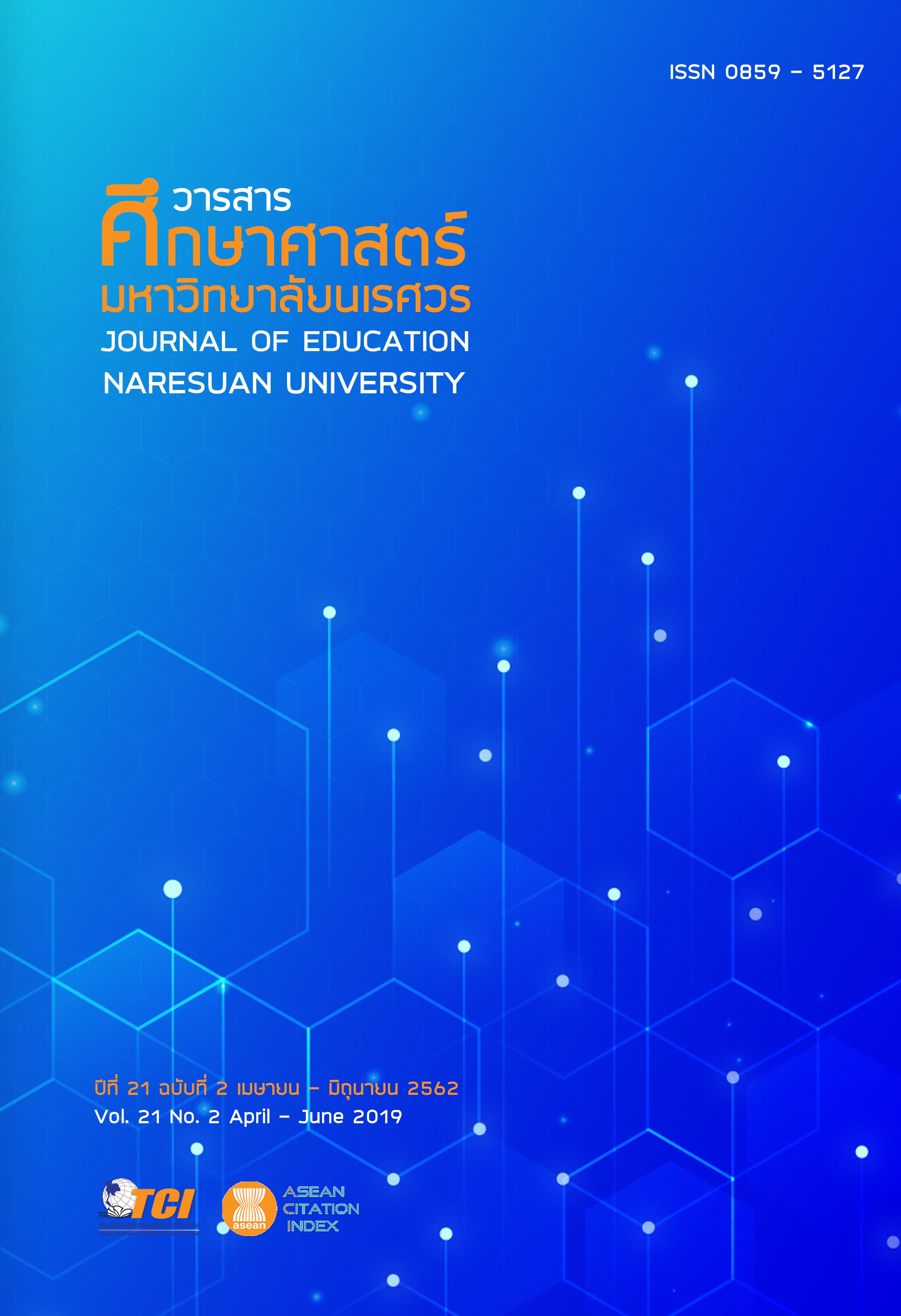ระบบนิเวศการเรียนรู้ดิจิทัลด้วยปัญญาประดิษฐ์สำหรับการเรียนรู้อย่างชาญฉลาด (A DIGITAL LEARNING ECOSYSTEM WITH ARTIFICIAL INTELLIGENCE FOR SMART LEARNING)
Main Article Content
Abstract
ระบบนิเวศการเรียนรู้ดิจิทัลด้วยปัญญาประดิษฐ์สำหรับการเรียนรู้อย่างชาญฉลาดเป็นการจัดพื้นที่การเรียนรู้ และเรียนรู้เนื้อหาต่างๆ ผ่านปัญญาประดิษฐ์ หรือ AI โดยในกระบวนการเรียนการสอนจะมีการนำปัญญาประดิษฐ์มาใช้ในการสนับสนุนผู้สอน สนับสนุนผู้เรียน ตอบสนองความต้องการของผู้เรียนที่ต่างกันได้พร้อมกันหลายคน การให้ความช่วยเหลือส่วนบุคคล การให้คะแนนโดยอัตโนมัติ และระบุจุดอ่อนในห้องเรียน ทั้งนี้แบ่งออกเป็น 3 พื้นที่การเรียนรู้ตามลักษณะของพื้นที่ ได้แก่ 1) ห้องเรียน 2) นอกห้องเรียน และ 3) บ้าน ซึ่งในระบบนิเวศการเรียนรู้ดิจิทัลนี้ ปัญญาประดิษฐ์จะมีบทบาทหลักอยู่ 4 บทบาท ได้แก่ 1) ผู้สร้างสรรค์อัจฉริยะ 2) ผู้สอนเสมือนจริง 3) ติวเตอร์อัจฉริยะ และ 4) ผู้ดูแลระบบอัจฉริยะ การพัฒนาระบบนิเวศการเรียนรู้ด้วยปัญญาประดิษฐ์ช่วยส่งเสริมให้ผู้เรียนใช้เทคโนโลยีดิจิทัลในการเรียนรู้อย่างชาญฉลาดได้ตลอดเวลาและในทุกสถานที่ มีความรับผิดชอบทั้งต่อตนเอง ผู้สอน และเนื้อหารายวิชา
A DIGITAL LEARNING ECOSYSTEM WITH ARTIFICIAL INTELLIGENCE FOR SMART LEARNING
A digital learning ecosystem with artificial intelligence for smart learning is the management of learning space and learning content through artificial intelligence (AI). In the instructional process, artificial intelligence is used to support instructors, support learners, automate grading and scoring, simultaneously a variety of student needs, provide personalized help for student and identify weaknesses in the classroom. Artificial intelligence digital learning ecosystem is divided into three learning spaces based on the nature of the area: 1) classroom, 2) beyond classroom, and 3) home. In this digital learning ecosystem, artificial intelligence has four main roles: 1) smart creator, 2) virtual instructor, 3) smart tutor, and 4) smart admin.
The development of artificial intelligence digital learning ecosystem can encourage learners to use digital technology for smart learning at any place and time, including they have responsibilities for oneself, an instructor, and course content.
Article Details
The owner of the article does not copy or violate any of its copyright. If any copyright infringement occurs or prosecution, in any case, the Editorial Board is not involved in all the rights to the owner of the article to be performed.
References
2. Chopra, R. (2014). Artificial Intelligence: A Practical Approach. Second Edition. New Delhi: S. Chand Publishing.
3. Dawes, T. (2017). The future of artificial intelligence technology. United State: Office of Science and Technology Advisor.
4. Deshpande, N., & Yadav, N. (2008). Artificial Intelligence. Pune: Technical Publications.
5. Holgado, A., & Penalvo, F. J. (2017). “A metamodel proposal for developing learning ecosystems.” Learning and collaboration technologies: Novel learning ecosystems. Cham: Springer International Publishing.
6. Kaplan, J. (2016). Artificial intelligence: What everyone needs to know. Oxford: Oxford University Press.
7. Khemani, D. (2013). A first course in artificial intelligence. New Delhi: McGraw Hill Education.
8. Kijsirikul, B. (2006). Artificial intelligence. Bangkok: Chulalongkorn University. [in Thai]
9. Kondratova, I., Molyneaux, H., & Fournier, H. (2017). “Design considerations for competency functionality within a learning ecosystem.” Learning and collaboration technologies: Novel learning ecosystems. Cham: Springer International Publishing.
10. Kultangwattana, W. (2011). Student evaluation system by artificial intelligence. Udonthani: Udonthani Rajabhat University. [in Thai]
11. Kultangwattana, W. (2015). The Construction of automatic tests using artificial intelligence. Udonthani: Udonthani Rajabhat University. [in Thai]
12. Lohpradit, W. (2016). Artificial intelligence and expert system. Lampang: Rajamangala University of Technology Lanna. [in Thai]
13. Ministry of Education. (2008). Course core basic education act 2008. Bangkok: Agricultural cooperative federation of Thailand printing. [in Thai]
14. National strategy board. (2017). The 20 years national strategy. Bangkok: Office of the national economic and social development board. [in Thai]
15. Parnichparinchai, T. (2017). The study of the competencies of learning management for 21st century of bachelor degree students in educational project for the development of teacher in the wilderness at the Thai-Myanmar border area, Tak province. Journal of Education Naresuan University, 19(4), 123-132. [in Thai]
16. Rattanapoka, C. (2016). Introduction to artificial intelligence. Bangkok: King Mongkut’s University of Technology North Bangkok. [in Thai]
17. Suriyawong, T. (2017). The general medical diagnosis expert system by decision tree technique on the smartphone application. Journal of Information and Innovation Technology Management Mahasarakham Rajabhat University, 4(2), 84-93. [in Thai]
18. Thanachawengsakul, N., & Jeerungsuwan, N. (2018). Instructional model of MIAP on cloud computing technology of the undergraduate students in order to promote 21st century learning skills. Journal of Education Naresuan University, 20(4), 58-69. [in Thai]
19. Wareeprasirt, N. (2009). Artificial intelligence. Bangkok: KTP comp & consult. [in Thai]
20. Wattanakul, P., & Mungsing, S. (2017). Assessment system of virtual smart classroom for education 4.0: Technical dimension. Journal of Industrial Technology Ubon Ratchathani Rajabhat University, 7(2), 160-175. [in Thai]
21. Yathongchai, W., & Angskun, J. (2013). An intelligent tutoring system: Innovation for next generation learning. Journal of Social Science Suranaree University of Technology, 7(1), 101-117. [in Thai]


